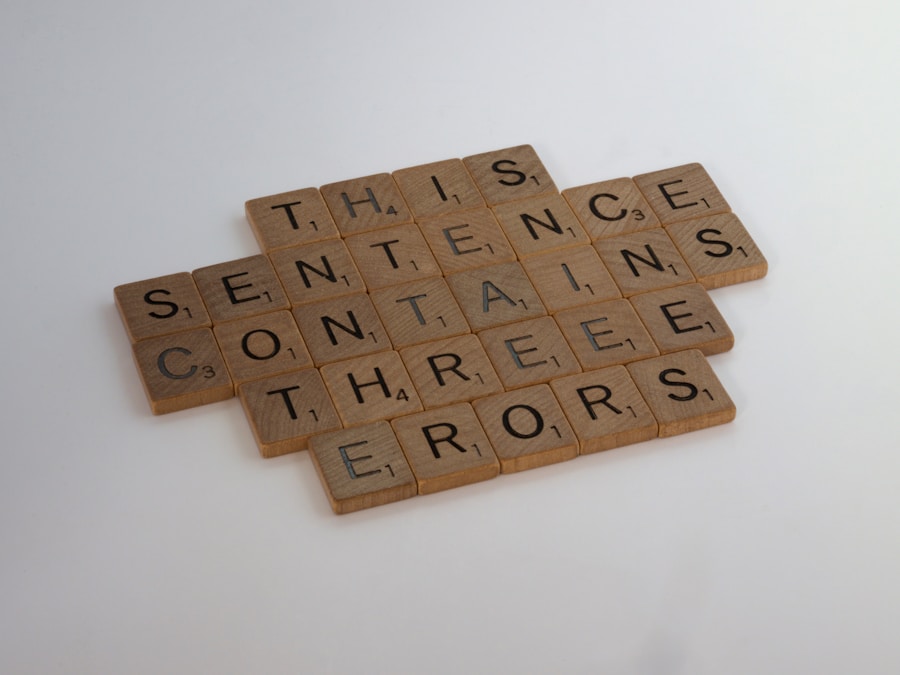
Phonics is a method of teaching reading and writing that emphasizes the relationship between sounds and their corresponding letters or groups of letters. At its core, phonics instruction involves teaching children to recognize the sounds that letters make and how these sounds combine to form words. This foundational skill is crucial for developing literacy, as it enables learners to decode unfamiliar words, thereby enhancing their reading fluency and comprehension.
Phonics is not merely about memorizing the alphabet; it encompasses a systematic approach to understanding how sounds function within the English language. The phonetic structure of English can be complex due to its irregularities and exceptions. For instance, the letter combination “ough” can be pronounced in several ways, as seen in words like “though,” “through,” and “cough.” Understanding phonics requires learners to grasp these nuances, which can be challenging but ultimately rewarding.
Phonics instruction typically begins with the simplest sounds associated with individual letters before progressing to more complex sound combinations, such as blends and digraphs. This structured approach helps students build a solid foundation for reading, allowing them to tackle increasingly difficult texts as their skills develop.
Key Takeaways
- Phonics is the relationship between letters and sounds, and it is essential for learning to read and write.
- Phonics instruction helps children decode words and improve their reading fluency and comprehension.
- Effective phonics teaching strategies include using letter-sound relationships, blending, and segmenting words.
- Phonics instruction can improve spelling skills by helping students understand the patterns and rules of the English language.
- Challenges in phonics instruction can be overcome by using multisensory approaches and providing targeted interventions for struggling readers.
The Importance of Phonics in Reading Development
Phonics plays a pivotal role in reading development, serving as a bridge between spoken language and written text. Research has consistently shown that phonics instruction significantly improves children’s reading abilities, particularly in the early stages of literacy acquisition. By learning to decode words through phonics, children gain the ability to read independently, which fosters a love for reading and enhances their overall academic performance.
The National Reading Panel has highlighted phonics as one of the essential components of effective reading instruction, underscoring its importance in helping children become proficient readers. Moreover, phonics instruction not only aids in word recognition but also contributes to vocabulary development and comprehension skills. As children learn to decode words, they encounter new vocabulary that expands their language skills.
This exposure is crucial for developing a rich vocabulary, which is directly linked to reading comprehension. When students can decode words efficiently, they can focus on understanding the meaning of the text rather than getting bogged down by unfamiliar words. Consequently, phonics serves as a foundational skill that supports broader literacy development, making it an indispensable component of early education.
Teaching Phonics: Strategies and Techniques

Effective phonics instruction involves a variety of strategies and techniques tailored to meet the diverse needs of learners. One widely used approach is systematic phonics instruction, which follows a structured sequence that introduces sounds and letters in a logical order. This method often begins with single-letter sounds before moving on to consonant blends and vowel combinations.
Teachers may use explicit instruction, where they model the sounds and demonstrate how to blend them into words, allowing students to practice these skills through guided activities. Incorporating engaging activities can also enhance phonics instruction. For example, using games that involve letter-sound matching or word-building can make learning more interactive and enjoyable for students.
Phonics songs and rhymes are another effective tool, as they help reinforce sound-letter relationships through repetition and melody. Additionally, utilizing visual aids such as flashcards or charts can support visual learners by providing concrete representations of sounds and letters. By combining various instructional strategies, educators can create a dynamic learning environment that caters to different learning styles and keeps students motivated.
Phonics and Spelling: The Connection
| Metrics | Results |
|---|---|
| Phonics Assessment Score | 85% |
| Spelling Test Score | 92% |
| Reading Fluency Improvement | 15 words per minute |
| Spelling Accuracy | 90% |
The relationship between phonics and spelling is intricate and significant in the realm of literacy education. Phonics provides the foundational knowledge necessary for understanding how words are constructed, which directly influences spelling abilities. When students learn the sounds associated with letters and letter combinations, they develop an awareness of how these sounds correspond to written language.
This understanding is crucial for spelling, as it allows learners to apply their phonetic knowledge when writing words. For instance, when students encounter a new word, their phonics skills enable them to break it down into its constituent sounds and reconstruct it in written form. This process not only aids in spelling but also reinforces their reading skills as they become more adept at recognizing familiar patterns in words.
Furthermore, teaching spelling through a phonics lens encourages students to think critically about language structure, fostering a deeper understanding of word formation. As students progress in their literacy journey, the interplay between phonics and spelling becomes increasingly evident, highlighting the importance of integrating both elements into instruction.
Overcoming Challenges in Phonics Instruction
Despite its importance, phonics instruction can present challenges for educators and students alike. One common obstacle is the varying levels of phonemic awareness among students entering the classroom. Some children may struggle with distinguishing between different sounds or may have difficulty blending sounds together to form words.
This variability necessitates differentiated instruction that meets each student’s unique needs. Teachers must be equipped with strategies to assess individual skill levels and provide targeted support to those who require additional assistance. Another challenge lies in addressing the diverse learning styles present in any classroom setting.
Educators must be flexible in their teaching methods, incorporating a range of activities that engage different senses and learning modalities. For example, using manipulatives like letter tiles or incorporating movement-based activities can help kinesthetic learners grasp phonics concepts more effectively.
Using Phonics in Early Literacy Interventions

Targeted Support for At-Risk Students
These interventions typically involve small group settings where educators can offer personalized attention and tailored instruction. This targeted support addresses specific areas of need, providing at-risk students with the necessary tools to succeed.
Structured Literacy Programs
One effective intervention strategy is the use of structured literacy programs that focus on systematic phonics instruction alongside other essential components of reading development, such as vocabulary and comprehension skills. Programs like Orton-Gillingham or Wilson Reading System emphasize explicit teaching of phonics rules while integrating reading practice with decodable texts that align with students’ current skill levels.
Building Confidence and Competence
By utilizing these evidence-based approaches, educators can help struggling readers build confidence and competence in their reading abilities.
Phonics and Reading Comprehension
While phonics is primarily associated with decoding skills, its impact extends beyond mere word recognition; it plays a crucial role in reading comprehension as well. When students possess strong phonics skills, they are better equipped to decode texts fluently, allowing them to focus on understanding the content rather than getting stuck on individual words. This fluency is essential for developing comprehension skills because it enables readers to engage with the text at a deeper level.
Furthermore, phonics instruction supports comprehension by fostering vocabulary development. As students learn to decode new words through phonics, they encounter a broader range of vocabulary that enhances their understanding of various texts. This exposure is particularly important when reading complex materials that require background knowledge and context clues for comprehension.
By integrating phonics into reading instruction, educators can create a comprehensive approach that not only improves decoding skills but also strengthens overall comprehension abilities.
Phonics in Multisensory Learning Approaches
Multisensory learning approaches have gained popularity in recent years as effective methods for teaching phonics and enhancing literacy skills. These approaches engage multiple senses—visual, auditory, and kinesthetic—to reinforce learning and accommodate diverse learning styles. For instance, using tactile materials such as sandpaper letters allows students to trace letters while simultaneously hearing their corresponding sounds, creating a multisensory experience that deepens understanding.
Incorporating technology into multisensory phonics instruction can also enhance engagement and motivation among learners. Interactive apps and software programs often feature games that promote letter-sound recognition through visual animations and auditory feedback. These digital tools can provide immediate reinforcement and allow students to practice at their own pace, making learning more accessible and enjoyable.
By embracing multisensory approaches in phonics instruction, educators can create dynamic learning environments that cater to various learning preferences while promoting effective literacy development.
If you are interested in phonics, you may also want to check out this article on Fry Sight Words. Fry Sight Words are a list of high-frequency words that are essential for early readers to recognize quickly and accurately. Mastering these words can greatly improve reading fluency and comprehension.
FAQs
What is phonics?
Phonics is a method of teaching reading and writing that focuses on the relationship between sounds and their corresponding letters or letter groups.
Why is phonics important?
Phonics is important because it helps children develop the foundational skills they need to become successful readers and writers. It teaches them how to decode and encode words, leading to improved reading comprehension and spelling abilities.
How is phonics taught?
Phonics is typically taught through a systematic and explicit approach, where students are taught the relationship between letters and sounds in a structured and sequential manner. This often involves activities such as blending, segmenting, and phoneme manipulation.
What are some common phonics rules and patterns?
Common phonics rules and patterns include short and long vowel sounds, consonant blends, digraphs, diphthongs, silent letters, and syllable types. These rules and patterns help students understand the complexities of the English language and improve their reading and spelling skills.
At what age should phonics instruction begin?
Phonics instruction can begin as early as preschool or kindergarten, when children are first learning to read and write. However, the specific age at which phonics instruction begins may vary depending on the educational system and individual student needs.



